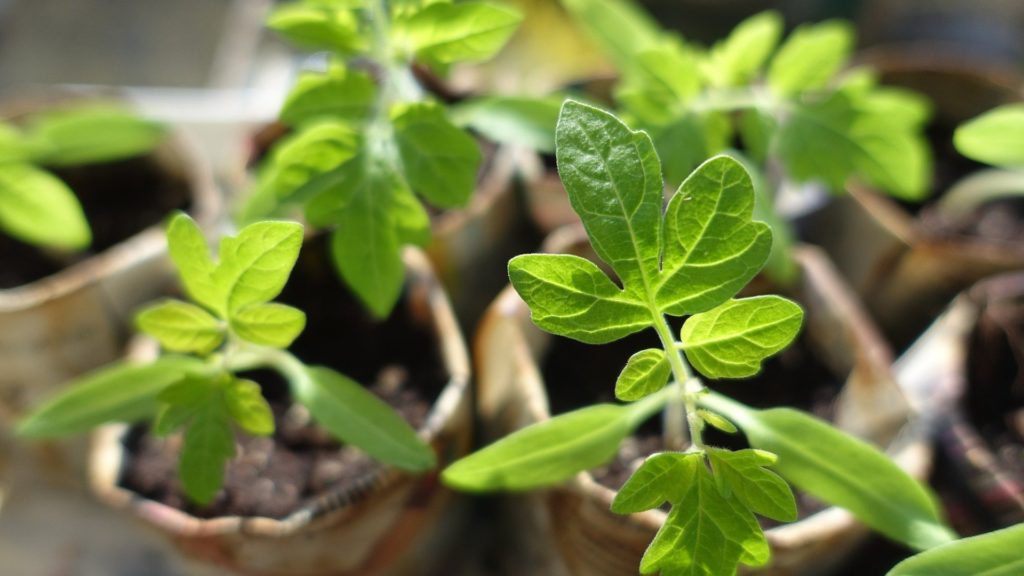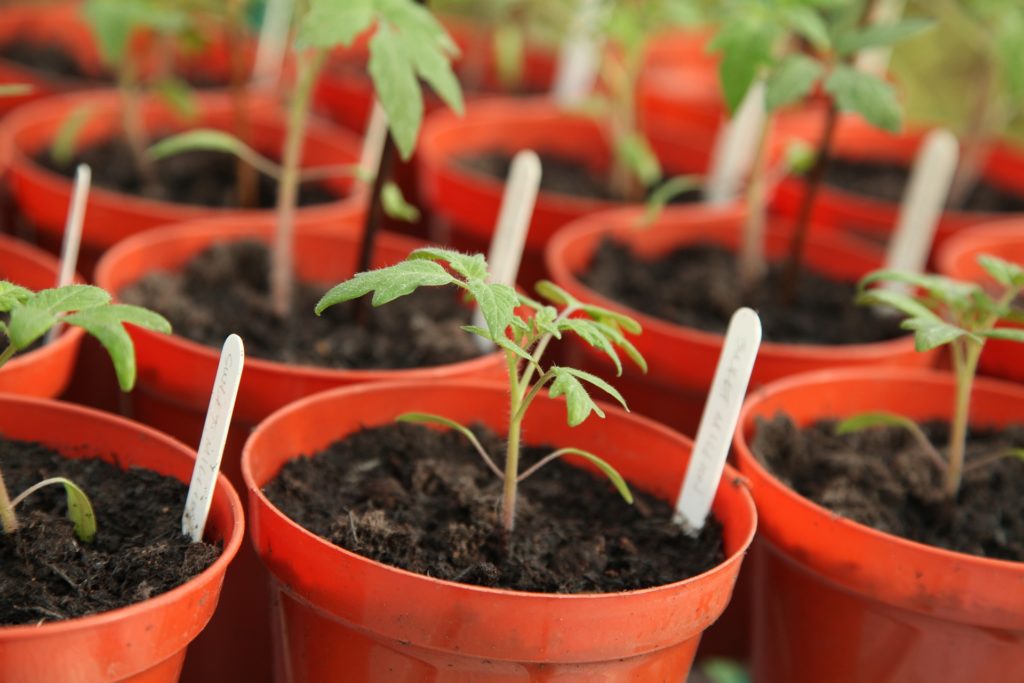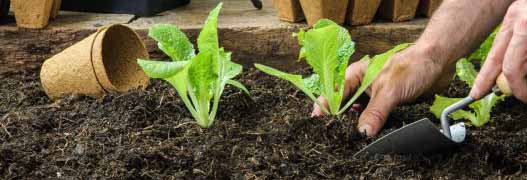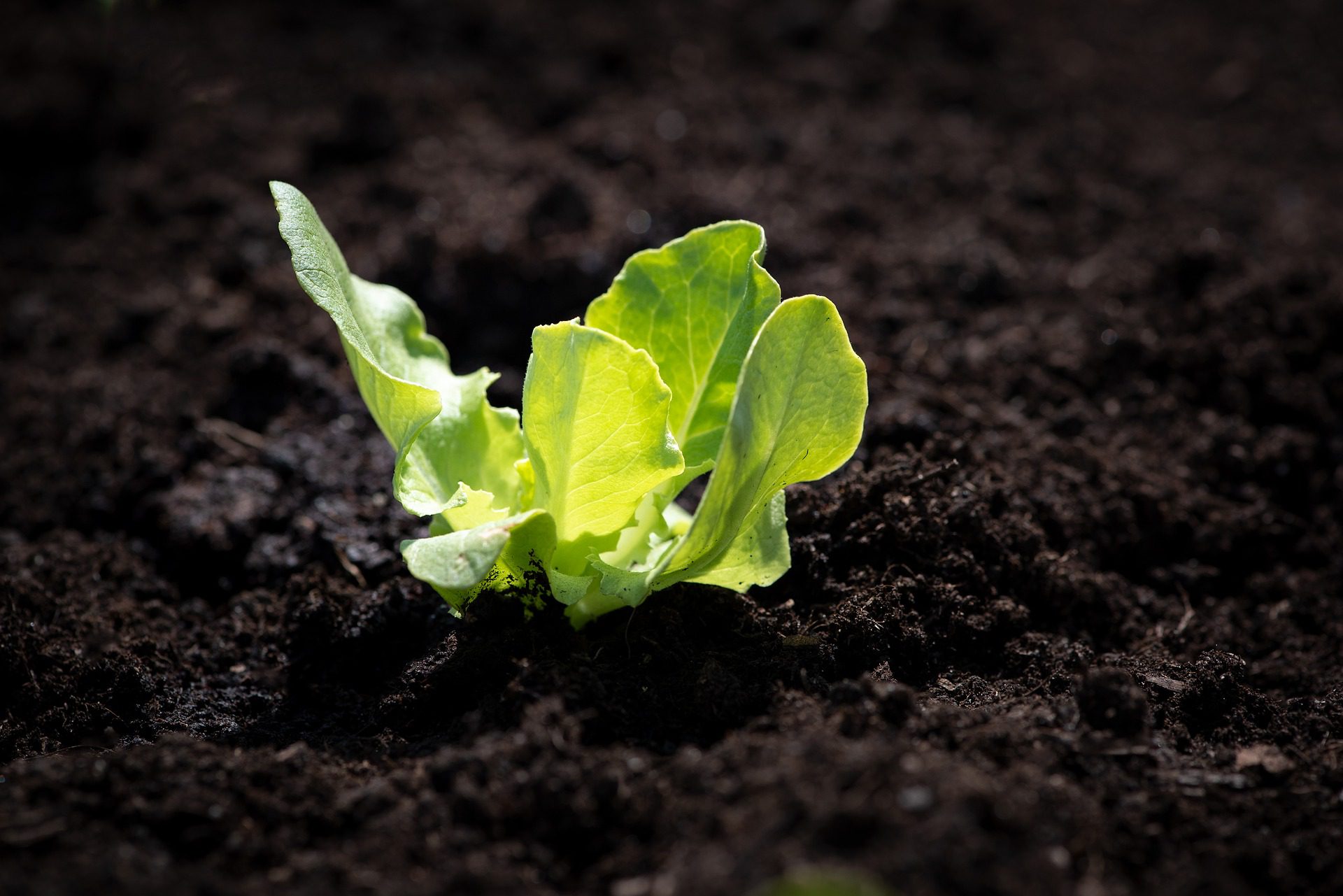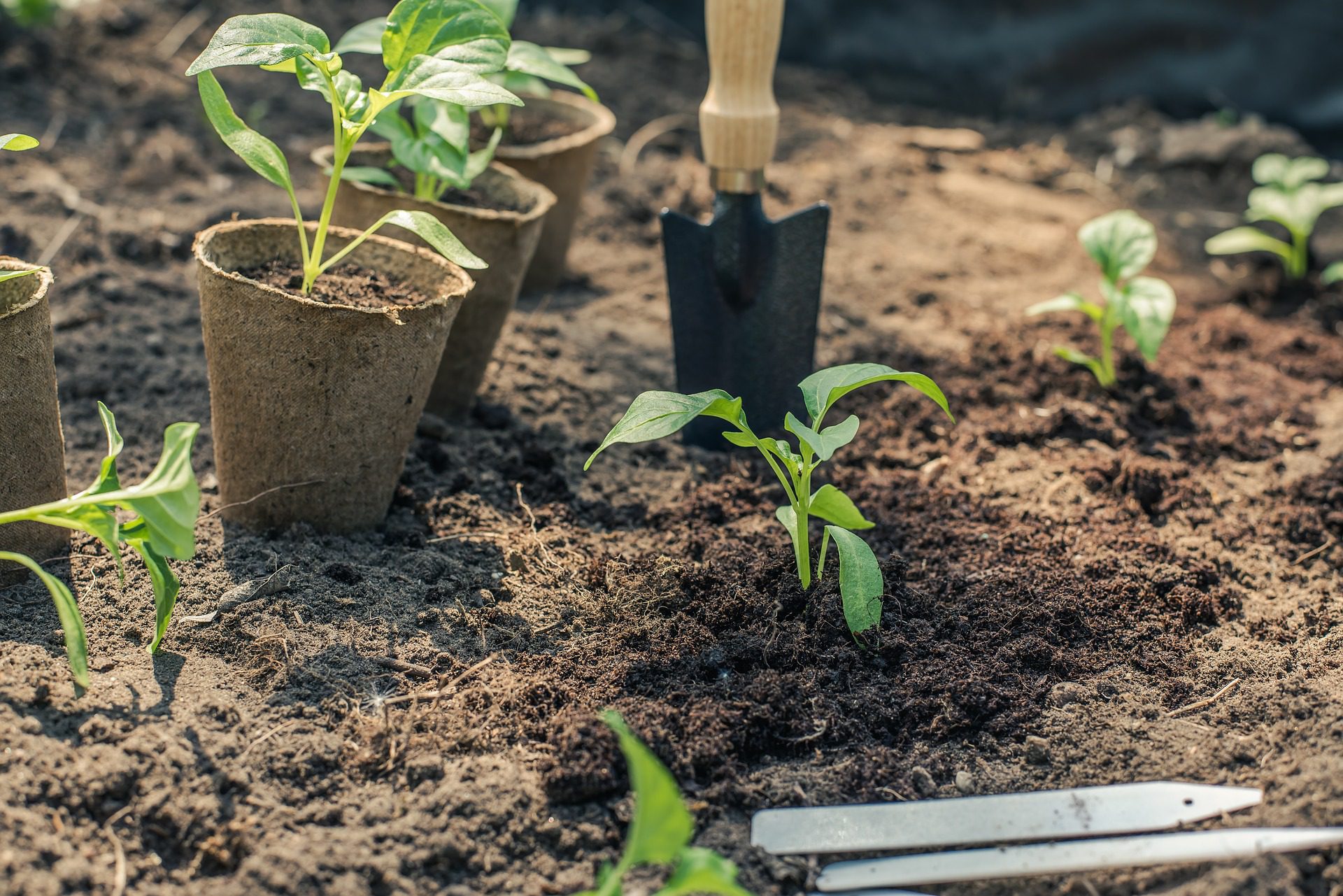
Tranplanting Seedlings
Transplanting the seedlings that have been sown in boxes or cups. This operation allows the development of secondary roots ensuring a better support to the plant. The seedlings are often too tightly packed and competition is tough. Leaving them too long in their original containers weakens them and makes them more prone to disease. The mixture used for the seedlings is often light and not very fertile. The substrate used for transplanting must contain more nutrients to meet the needs of the plant.
When to Transplant ?
A seedling can be transplanted when it has two “true” leaves. If you wait any longer, the roots may become entangled making it more difficult to transplant without damaging them. Their growth can be impacted and making them more prone to damping off.
How to transplant
Required material
- individual cups
- potting soil
- compost
- fork
- labels
- large pencil
Transplanting Into Individual Cups
One (1) hour after a heavy watering, gently lift the mixture with a fork, starting at the edges. Take care with the roots, no need to remove the soil around them. If the root ball comes with it, keep it, the trauma will be less.
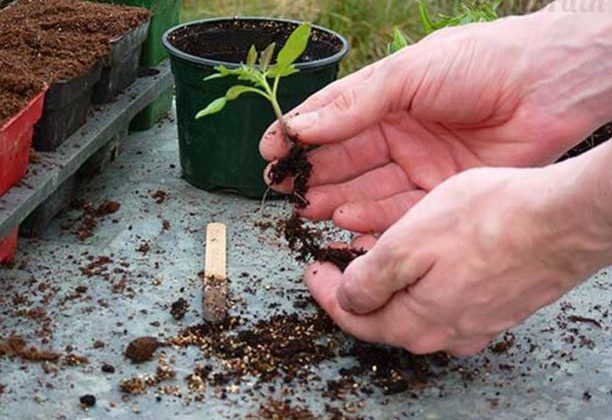
- Prepare individual cups by filling them with a mixture of good potting soil and compost.
- Pack well and make a hole in the centre of the substrate with a large pencil or stick.
- Insert the roots of the plant up to the collar of the plant.
- Pack the soil around the seedling and water.
- Place your container in the shade until vegetation starts to grow again.
Tomatoes are a special case. You can plant them deeper so that the roots develop on the stem, the plant will then be stronger.
Transplanting in the Garden
The soil will have been previously worked to accommodate the seedlings. Weeded, hoed and amended, it will be loose and easy to work. Steps 1 and 2 remain the same as for transplanting in cups. Then dig the locations directly into the ground, respecting the recommended distance for each species, and install the seedlings. Then water with a fine but abundant rain.
The Days Following the Transplants
During the days following the transplanting, it is normal that the seedlings wrinkles slightly. Any transplanting stresses the plant, everything returns to normal in a few days.
If the seedling already has a good number of leaves, cut it back slightly (remove one or two leaves) so that it does not consume too much energy in its aerial mass and it can concentrate on the adaptation of its root mass in the cup.
If it has only 2 ‘’true’’ leaves, it is not wise to cut it down. Leave the container in the shade, direct sun could stress the seedlings.
When the seedlings have readapted to its container, you can then move it to the appropriate place – full sun if the plant requires it.


